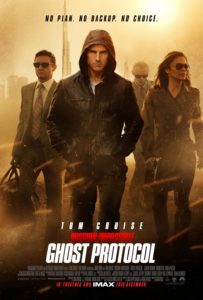I had to rewatch Underworld first, plus also read a Wikipedian summary of Underworld: Evolution, because it turns out that my review of that movie didn’t tell me a damn thing about what happened in it. Which I think is more good than bad, but in the moment it was decidedly inconvenient. And then I still didn’t have to watch the third movie, since the other two already explain in flashback everything that happens in it. Between a wholly retreaded plot and no trace of Kate Beckinsale in skintight leather, I really can’t figure out what someone was thinking when they made it. But the upshot of all this is that I was able to go into Underworld: Awakening without being confused at all. Mind you, probably none of it was necessary, since they had a brief synopsis at the beginning of the movie, as if to acknowledge that not everyone has the films readily available and it’s been like six years since one that mattered.
I guess what made me think I needed to watch them in advance was previews that talked about Kate’s vampiric Selene having been imprisoned for twelve years, and I couldn’t really remember anything like that. Well, it turns out that it’s because there was no such imprisonment; instead, the movie starts off with Selene and Michael Corvin on the run in the aftermath of humanity discovering the existence of vampires and werewolves and reacting, well, predictably. And then she gets captured, and then twelve years pass, all in the prologue of this movie. So, oops. Still, Underworld is not a terrible movie, so it’s not like I am filled with regret. Anyway, she eventually gets free, as implied by the time limit on the imprisonment, finds her leathers and then starts looking for Michael again. I suppose Scott Speedman is holding out for the next sequel, because there were lots of sidetrackings that happened, including some kind of big conspiracy! Which is about all there is to say about that without spoilers, but I’d just like to add that this, as with the first and probably the second movie, was not terrible. And also, I really kind of dig ruthless Selene. (Not that she was chock full of ruth before, but I’m confident there was some there, as how else to explain the contrasting dearth today? (Well, okay, yesterday is when I saw the movie, and the series is set in purposefully non-specific modern day, anywhen from 1990 to 2020.))

